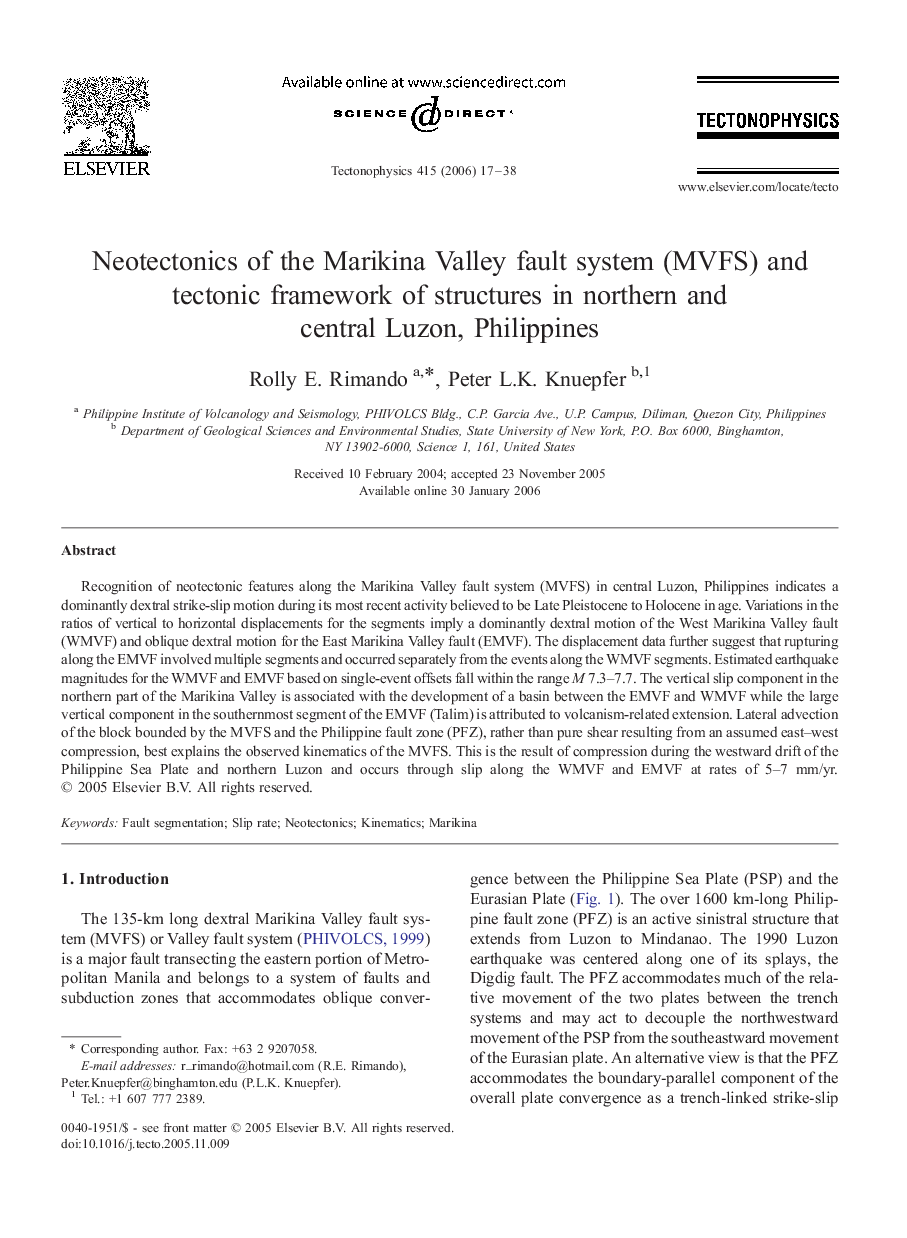| Article ID | Journal | Published Year | Pages | File Type |
|---|---|---|---|---|
| 4695242 | Tectonophysics | 2006 | 22 Pages |
Recognition of neotectonic features along the Marikina Valley fault system (MVFS) in central Luzon, Philippines indicates a dominantly dextral strike-slip motion during its most recent activity believed to be Late Pleistocene to Holocene in age. Variations in the ratios of vertical to horizontal displacements for the segments imply a dominantly dextral motion of the West Marikina Valley fault (WMVF) and oblique dextral motion for the East Marikina Valley fault (EMVF). The displacement data further suggest that rupturing along the EMVF involved multiple segments and occurred separately from the events along the WMVF segments. Estimated earthquake magnitudes for the WMVF and EMVF based on single-event offsets fall within the range M 7.3–7.7. The vertical slip component in the northern part of the Marikina Valley is associated with the development of a basin between the EMVF and WMVF while the large vertical component in the southernmost segment of the EMVF (Talim) is attributed to volcanism-related extension. Lateral advection of the block bounded by the MVFS and the Philippine fault zone (PFZ), rather than pure shear resulting from an assumed east–west compression, best explains the observed kinematics of the MVFS. This is the result of compression during the westward drift of the Philippine Sea Plate and northern Luzon and occurs through slip along the WMVF and EMVF at rates of 5–7 mm/yr.
